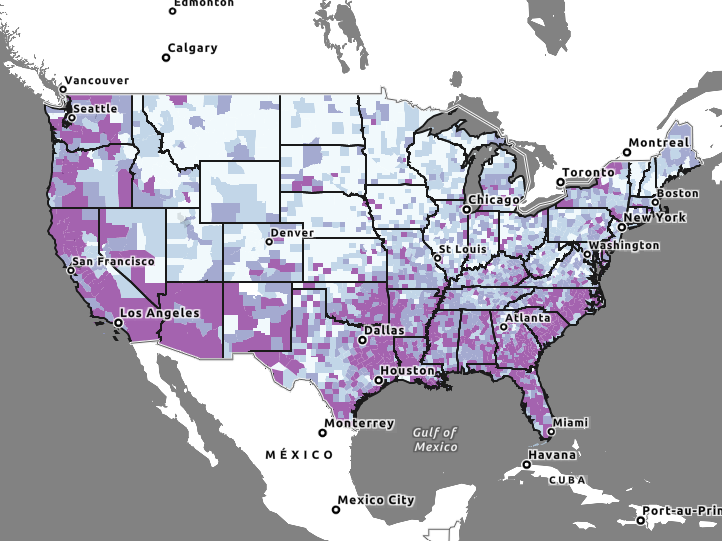The Centers for Disease Control and Prevention (CDC) and the Department of Health and Human Services Office of Minority Health (DHHS OMH) have launched a new Minority Health Social Vulnerability Index (SVI).
The COVID-19 pandemic highlighted how the social determinants of health directly impact the health of communities. Unsafe or unstable housing, income insecurity, lack of transportation, and underlying health inequities put some populations at higher risk during the pandemic. Systemic inequities resulted in a higher burden on racial and ethnic minority communities, especially during the first wave of the pandemic.
The Social Vulnerability Index (SVI) was initially developed by the CDC in 2011 to help government officials identify communities that may need support during public health emergencies. The standard SVI incorporates 15 social factors based on census data such as socioeconomic status, minority and language status, disability status, housing type and transportation.
The new Minority Health SVI launched in 2021 adds additional factors known to be associated with COVID-19 outcomes and include two new themes. Health care infrastructure and access now also consider the number of hospitals and urgent care clinics per 100,000 residents. Medical vulnerability now includes variables such as the obesity rate and cardiovascular disease mortality per 100,000 residents. The dataset is also broken down into specific race and ethnicity categories and languages. Data is included for five racial and ethnic minority groups: American Indian and Alaska Native, Asian, African American or Black, Native Hawaiian/Pacific Islander, and Hispanic or Latino/a. The data also include the top five languages spoken by populations with limited English proficiency (LEP) at the county level, described in variables such as “Spanish speakers who speak English less than ‘very well’ ”.
We all have a responsibility in public health to address the inequities that persist across the social determinants of health. In order to understand and address racial and ethnic health disparities, we need quality disaggregated data. We are excited to see the new Minority Health SVI offer greater disaggregation of its data by factoring in more languages and racial and ethnic minority groups.
Short term, the data and dashboards can help with planning COVID-19 testing, and improving access to treatment and vaccine distribution for specific communities. The data can also be used to help identify communities that need improved health care infrastructure and access, language assistance, and other community-level efforts to address systemic factors related to the social determinants of health.
The Minority Health SVI is a critical tool for applying a health equity lens to public health. We look forward to exploring the data and incorporating it into our work.
Read the Minority Health Social Vulnerability Index Fact Sheet and search the data using the Minority Health Social Vulnerability Index Explorer.




